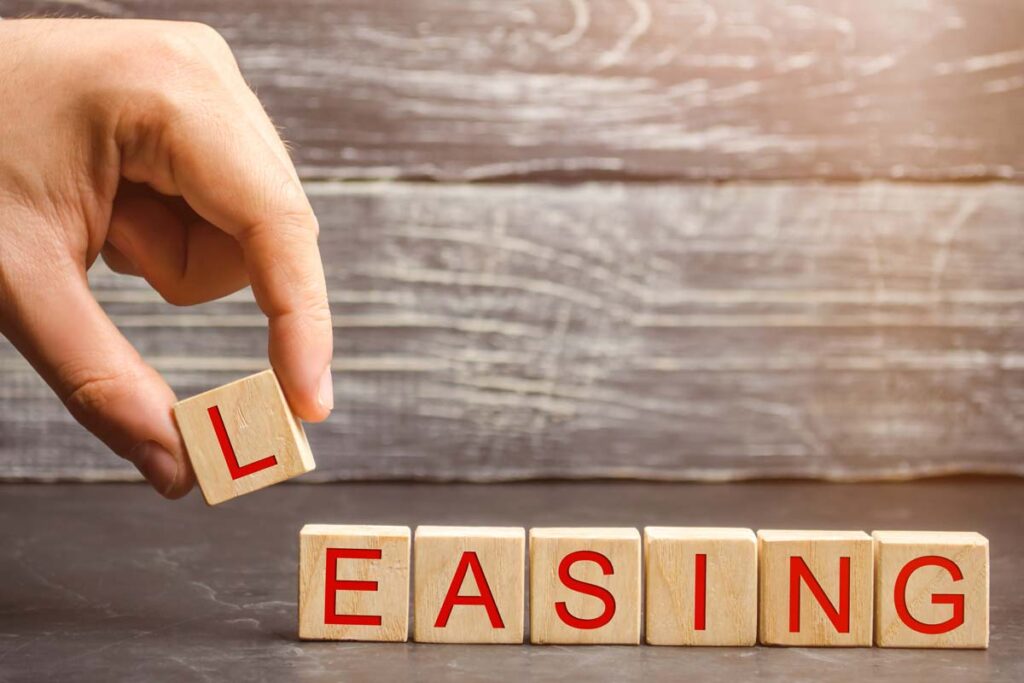The rules for accounting for leases in a set of financial statements in accordance with GAAP (Generally Accepted Accounting Principles) will change significantly starting in 2022. The logic for making the change is that balance sheets are currently very different for businesses that own a building compared to businesses that rent a building. To enhance comparability between businesses the Financial Accounting Standards Board (FASB), who sets U.S. GAAP, has adopted new rules.
Capitalizing Operating Leases
The new rule, FASB ASU (Accounting Standards Update) 2016.02, will require that all leases with a term over one year must be capitalized effective for years beginning after 12/15/2021. This will cover existing leases and early adoption is permitted. This new rule applies only to operating leases and not to leases that already were required to be capitalized.
Operating leases will need to be recorded as equal and offsetting amounts of assets and liabilities. This will not change the amount of equity but will significantly change the debt to equity ratio. The amount to be recorded will be the present value of the future lease payments.
Major Change to Your Balance Sheet
If you lease space or equipment under an operating agreement you will now need to capitalize those amounts. In the example below a cooperative starting out paying rent of $100,000 per year with a 3% increase per year over 20 years will record an asset and a liability of about $1.8 million. If they have a debt covenant on another loan this may well cause them to be in default. Some cooperatives are requesting loan modifications to indicate that a change in accounting rules will not be considered to cause a violation of a debt covenant. It is advisable to look at what your cooperative may need to capitalize in 2020 and take that into account when talking to lenders. The calculation to determine the amount to capitalize will take time. You need to determine which leases it applies to and then gather all of the information needed for the calculation. As the implementation date gets closer we expect that there will be software products available to assist in the calculations.
Steps for Implementation
Once you have identified which leases you have that are not already capital leases, and have an initial term over one year, you will need to determine the term of the lease, payments required over that term and the interest rate to use to discount those payments.
Determining the Term for Calculation
The term of the lease for the present value calculation is the non-cancelable period of the lease. This is the period where the cooperative has the exclusive right to use the asset. This will include any periods of free rent which are sometimes at the inception of the lease. The lease term for this calculation will include extensions that are likely to be exercised by the cooperative. If the landlord has any rights to terminate the lease or deny extension periods this must be considered. A judgement of the lease period is made at the commencement of the lease. If it later becomes clear that an assumption was incorrect, an evaluation must be made to determine if the lease asset and liability must be modified. For instance, if initially the cooperative did not intend to use a lease extension, but several years later it becomes clear that it is likely to use that extension, then a revision for the capitalized amount is needed.
Total Cost of the Lease over the term of the Agreement
The future obligations under the lease need to be laid out for the term of the agreement. Any non-lease components, such as maintenance, common area maintenance, or real estate taxes should be removed if possible. If these elements are included in the lease payments with no separate identification, they are considered part of the future obligations of the lease for this calculation. Having an arrangement where the tenant separately pays the property taxes, common maintenance and building insurance, such as a triple net lease, will result in a smaller lease obligation to capitalize.
Interest Rate for Calculation
A critical factor in calculating the present value is the interest rate used to discount the future payments. There are three ways to determine this. The first choice is to use the implicit rate used by the asset owner to set the lease rate. A cooperative might know this rate if it knows what the owner paid for the asset. For instance if a cooperative owned a building, sold to an investor who then immediately leased it back, the cooperative would know the rate of return being used to set the lease payments.
If the first choice is not known, then the second choice is to use the cooperative’s marginal borrowing rate over the term of the lease. This would be the interest rate that the cooperative would get if it borrowed the amount to purchase the asset it is leasing. This is somewhat subjective but a logical approximation is all that is required. Since leases are usually long term this would be higher than a variable rate or short term loan and would be in addition to existing loans for equipment and other purposes.
If the first and second choice methods are not available, the cooperative can use a risk free interest rate. This would be a U.S. Treasury bond rate over the term of the lease. Typically this will be much lower than the first and second choice rates.
The rate chosen is important since the higher the rate, the lower the present value of the future payments which results in a smaller amount to be capitalized.
Once the rate is set it will not be changed later in the lease period even if market rates change significantly. The rate is assumed to be fixed for the term of the lease. But if the lease is recalculated for other reasons, such as if the lease period changes, then the rate must be re-evaluated.
Calculation
The costs over the term of the lease should be laid out in a spreadsheet and the present value calculated using the applicable interest rate. This amount will be recorded as a right-of-use asset and as a lease liability. These amounts will be equal at all times throughout the term of the lease.
Initial Direct Costs
These amounts are the costs incurred at the inception of the lease and are only incurred if the agreement is finalized. This is primarily broker commissions. This amount will be capitalized and amortized over the life of the lease.
Initial direct costs do not include legal fees to evaluate the lease which are covered in a different part of GAAP. These will typically also be capitalized and amortized over the life of the lease.
Lease Incentives or Tenant Improvements Allowance
In some leases, the landlord will pay for some of the improvements needed to make the space useful for the cooperative. The logic in the treatment of the incentive or allowance is that the tenant will be repaying these to the landlord over the course of the lease. The amounts paid by the landlord for improvements will be recorded as a fixed asset for the leasehold improvements and as a contra-asset against the right-of-use asset. The leasehold improvement asset will be depreciated over the shorter of the asset’s useful life or the lease term. The contra-asset will be amortized over the life of the lease. The amortization amount will be a reduction of lease expense as the contra-asset is reduced.
Recognizing Lease Expense
Lease expense should be recorded on a straight line basis over the life of the lease. If the lease has a period of free rent at inception that period should be averaged with the payments over the life of the lease to give an equal expense amount each month. This is also the case for a lease where the payments increase each year over the life of the lease by a set amount. If the increases are tied to an index that will only be known each year, such as the CPI (Consumer Price Index), then future payments are assumed not to increase for the purpose of this calculation. In many cases the lease expense to record at the beginning of the lease will be less than the cash actually being paid. This will result in a payable being recorded. In some cases the difference between lease expense and the cash paid will not be material to the financial statements and cooperatives may decide not to follow this part of the lease rules.
Example of Capitalizing a Lease
Corner Coop enters into a lease for their new store:
- 15 year lease with 5 year option to renew
- Annual payments of $100,000 increasing 3% per year
- Marginal cost of borrowing – 4%
- Indirect lease costs – $12,000 (commercial leasing broker’s commission)
- Lease incentive – $15,000 (landlord reimbursed co-op for improvements)
Calculation of present value:
- Sum of annual payments for 20 years: $2,687,037
- Average over 20 years = $134,352
- Present value of payments = $1,827,429
Amount to be recorded on the books:
- Lease Liability of $1,827,429 as a long term liability
- Right-of-use Asset of $1,827,429 + $12,000 – $15,000 = $1,824,429
After one year the balance sheet will be adjusted to show:
- Lease liability = $1,727,429, the present value of remaining payments
- Right-of-use asset = $1,727,429 + $11,400 – $14,250 = $1,724,579
The year one income statement shows:
- Lease expense will be:
- Cash paid – $100,000 CR
- Lease expense – $134,352 DR
- Lease payable – $34,352 CR
- Amortization of the indirect lease costs and leasehold improvement allowance will be:
- Accumulated amortization – $150 DR
- Lease expense – $150 CR
- There is no income statement effect from amortizing the lease liability and the right of use asset:
- Lease liability – $100,000 DR
- Right of Use Asset – $100,000 CR
Conclusion
There is just one year until this rule is applicable to calendar 2022 financial statements. If a cooperative has any significant operating leases we recommend that you analyze what the implementation of these new rules will mean for your balance sheet. We expect that the determination of the lease obligation will take a significant amount of time. Looking at this now will help you to more easily implement these rules later and to start discussions now with lenders, boards and other users of your financial statements.
For more information on this topic, continue reading this overview of the new lease accounting standard, or 5 tips when adopting the new lease standard.


